Proliferation zones in the axolotl brain and regeneration of the telencephalon
- PMID: 23327114
- PMCID: PMC3554517
- DOI: 10.1186/1749-8104-8-1
Proliferation zones in the axolotl brain and regeneration of the telencephalon
Abstract
Background: Although the brains of lower vertebrates are known to exhibit somewhat limited regeneration after incisional or stab wounds, the Urodele brain exhibits extensive regeneration after massive tissue removal. Discovering whether and how neural progenitor cells that reside in the ventricular zones of Urodeles proliferate to mediate tissue repair in response to injury may produce novel leads for regenerative strategies. Here we show that endogenous neural progenitor cells resident to the ventricular zone of Urodeles spontaneously proliferate, producing progeny that migrate throughout the telencephalon before terminally differentiating into neurons. These progenitor cells appear to be responsible for telencephalon regeneration after tissue removal and their activity may be up-regulated by injury through an olfactory cue.
Results: There is extensive proliferation of endogenous neural progenitor cells throughout the ventricular zone of the adult axolotl brain. The highest levels are observed in the telencephalon, especially the dorsolateral aspect, and cerebellum. Lower levels are observed in the mesencephalon and rhombencephalon. New cells produced in the ventricular zone migrate laterally, dorsally and ventrally into the surrounding neuronal layer. After migrating from the ventricular zone, the new cells primarily express markers of neuronal differentiative fates. Large-scale telencephalic tissue removal stimulates progenitor cell proliferation in the ventricular zone of the damaged region, followed by proliferation in the tissue that surrounds the healing edges of the wound until the telencephalon has completed regeneration. The proliferative stimulus appears to reside in the olfactory system, because telencephalic regeneration does not occur in the brains of olfactory bulbectomized animals in which the damaged neural tissue simply heals over.
Conclusion: There is a continual generation of neuronal cells from neural progenitor cells located within the ventricular zone of the axolotl brain. Variable rates of proliferation were detected across brain regions. These neural progenitor cells appear to mediate telencephalic tissue regeneration through an injury-induced olfactory cue. Identification of this cue is our future goal.
Figures
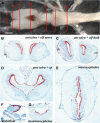
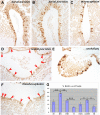
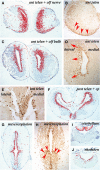
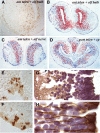

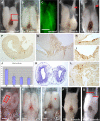
References
Publication types
MeSH terms
Grants and funding
LinkOut - more resources
Full Text Sources
Other Literature Sources

